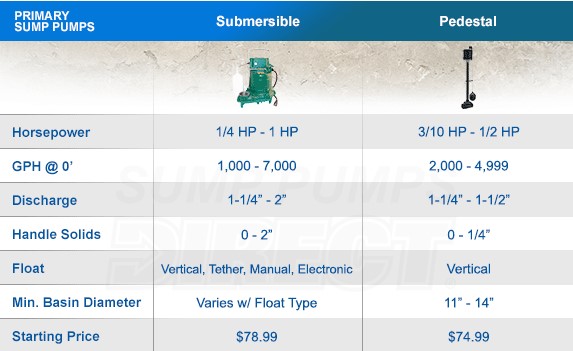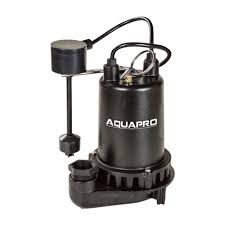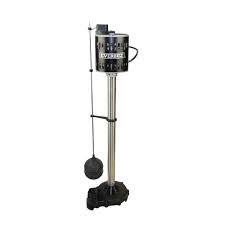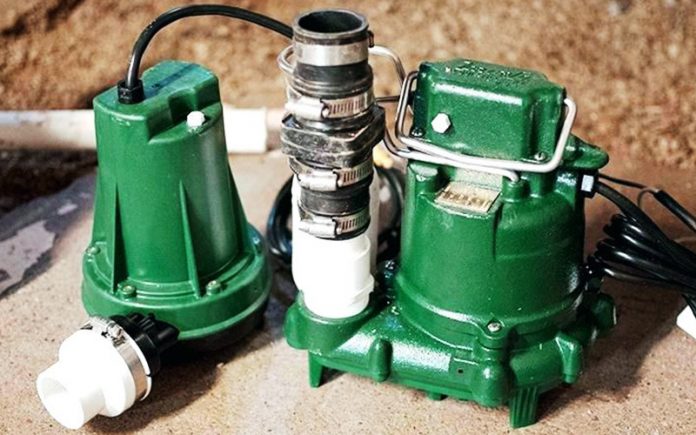Do you know that more than half of the households in the US face underground flooding or wetness problems due to flooding or hurricanes? Sump Pump is a smart solution to protecting your basement or any other crawled space from the risk of flooding. It may seem like a simple technology, but trust me it saves you a lot of trouble. If you live in an area where flooding or any type of disasters that causes flooding is a frequent problem, then you certainly need sump pumps for draining out water from your basement. With different types of sump pumps, the risk of rising groundwater can be mitigated very smartly and swiftly.
A top-class sump pump is your home solution which moves water automatically out of your sump basin or a similar crawled space to outside through a drainage system. Having a sump pump is a necessity for many households since it is essential to keep molds and harmful microorganisms at bay.
Different Types of Sump Pumps
The problem with sump pumps is that you will hardly think about them until you need one badly. There are various types of sump pumps on the market made for different purposes. If your basement is getting moldy and wet on a constant basis and your sump pump is failing to handle water caused by rain, flood or other disaster, then it might be the right time to learn about different types of sump pumps.
Though the fundamental working principle of sump pumps are the same, there are different types of sump pumps in terms of feature and functionality. Learning and getting the right type of sump pumps is the best thing you can do to protect your house from the unimaginable trouble in times of flooding. There are mainly 4 types of sump pumps you will find on the market. They are:
1. Primary Sump Pumps
Primary sump pumps are the most commonly found sump pumps in general households. They are designed to work with AC power and they are the most effective when power is available. They can pump up several thousand gallons of water per hour. There are mainly 2 types of primary sump pumps – submersible sump pumps and pedestal sump pumps.
 Image: Pedestal Sump Pump Vs Submersible Sump Pump
Image: Pedestal Sump Pump Vs Submersible Sump Pump
Submersible Sump Pump
Submersible sump pumps are perfect where the size of the basement basin is big enough for installing a submersible sump pumps. Submersible pumps are installed below the water level and they provide some nice benefits.

Since the motor of a submersible pump is situated underwater, it allows the motor to remain cool. This really helps to extend the lifespan of the pump. The last thing you would want from your sump pump is seeing it getting heated too much and breaking down eventually. Another benefit of having a submersible pump is they produce much less noise than other types of sump pumps since water is less sound transmitting than air.
Pedestal Sump Pump
A pedestal sump pump is more appropriate where there is very little space to install a submersible pump. Pedestal sump pumps require very little room to install since the entire pump is installed above the water. A pedestal sump pump is flexible and instant, and an easy solution to your basement flooding problem. They actually were the standard pumps before submersible pumps became so common.

The problem with pedestal sump pumps is that they produce more noise than their submersible counterparts. Another thing to consider is the density of solids in the water you want to pump. Pedestal pumps can handle solids as much as submersible pumps can do.
2. Battery Backup Sump Pumps
A sump pump is most needed in times of natural disasters like hurricanes or heavy rainfall which can cause flooding. But the thing is, during most of these times there is a high possibility of a power outage. Installing a battery backup sump pump is a good insurance against such situations. Since they can work with DC power, they prove to be handy when your primary sump pump fails to do its job due to power outage or any other reason. It can also support your primary sump pump as an auxiliary force. There are even new models of battery operated sump pumps which will let you know about any power failure through email or message. Typically, a battery backup sump pump lasts for around 8 hours.
3. Combination Sump Pumps
Combination sump pumps are the ultimate solution to your flooding problem. It is a combination of the primary pump and battery backup pumps. They both work with AC power and DC power. With a combination sump pump, you will be ready to face any type of flooding situation. When there is a power outage or the primary pump is not enough for pumping water, the backup pump will be very much handy. It is the pinnacle of your basement solution.
4. Sewage Pumps
Sewage pump is an efficient solution to pumping wastage that is dense with solids. If your basement is flooded with water which contains solids up to 2 inches, you should pick a sewage pump. The main difference between sewage pumps and other types of sump pumps is that other regular sump pumps are not so effective in pumping out solid wastes mixed in the water. Sewage pump can be installed in septic tanks or separate pump chambers.
5. Water Powered Sump pump
If you are using the pump on a municipal water system, a water-powered pump is a better option than battery backup sump pumps. The cost of water to run water powered sump pump is very little in comparison to other electric powered water powered sump pumps.
Selecting the right kind of sump pump can save you a lot of trouble. Before going for any type of sump pump for your basement, you must understand your requirements well. If you need any kind of assistance don’t forget to call a professional or let us know in the comment section. Till then, cheers.










































